| |
Plant Molecular Biology Group
Molecular control of plant stress responses
Head of Group: Dr. Jolán Csiszár, associate professor
Group members:
Dr. Ágnes Gallé, assistant professor
Dániel Benyó, research assistant
Edit Horváth, research assistant
Krisztina Bela, PhD student
Ágnes Hurton, PhD student
Research:
Reactive oxygen species (ROS) are generated during normal aerobic metabolism but their level typically increase under different stress conditions. Because of the highly cytotoxic and reactive nature of ROS, their accumulation must be under tight control. Current concepts emphasize a redox-regulated aspect of cell homeostasis, involving individual ROS, ROS-producing enzymes, antioxidants, their oxidized forms, and/or oxidation/reduction state and its role in mediating plant responses to abiotic stress conditions.
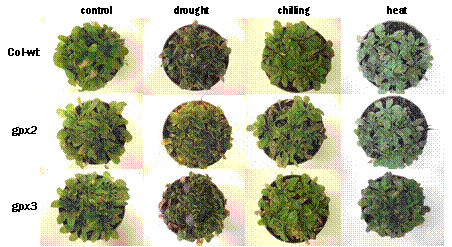  

Some elements of stress responses are estimated by using Arabidopsis mutants impaired in biochemical/regulatory steps connected to the ascorbate - glutathione cycle, e. g. glutathione reductase, glutathione peroxidases, glutathione transferases, dehydroascorbate reductases. In the focus of our research are the oxidative stress responses, redox status, glutathione and the connecting antioxidant mechanisms in plants, such as Arabidopsis, tomato, wheat, Brachypodium, Brassica and poplar.
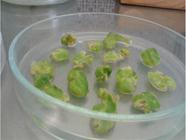 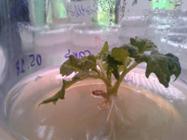 
One of our research programs targets the adaptation of a recently developed methodology which permits monitoring of the dynamic changes of redox state in living plants or tissues using real time fluorescence imaging. A fluorescent reporter system has been developed, which uses a redox sensitive green fluorescent protein (roGFP), allowing in vivo monitoring of redox state.
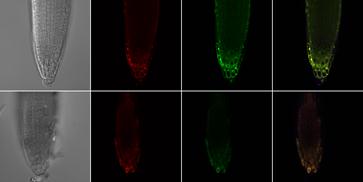 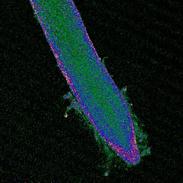
The increase of detoxification triggered by glutathione transferase (GST) enzymes under various stresses can be an important factor in stress protection strategies. The resulting glutathione conjugates are exported from the cytosol to the vacuole by an ATP-dependent tonoplast transporter. Therefore, one of the aims was to identify such GSTs and ABC transporters, which can play an important role in the protection against xenobiotic by-products of environmental stresses.
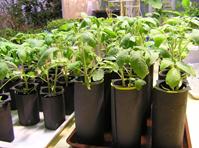   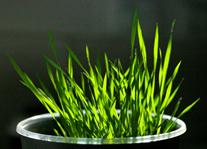
The other goal of our group is the identification of the regulation of miRNAs of Brachypodium distachyon related to cell division and lateral root development. miRNAs lead to posttranscriptional gene silencing through mRNA degradation or translational inhibition. Relations between the cell division, cell cycle and some small RNAs have already been reported. In Arabidopsis the miR319 was first identified from an activation-tagging mutant in which a viral enhancer leads to overexpression of this miRNA, which results in crinkly leaves. Several transcription factors and development-related genes have been reported as targets of regulatory small RNAs, and together they play key roles in gene expression regulatory network controlling plant growth and developmental processes.
 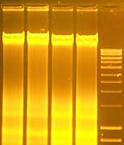 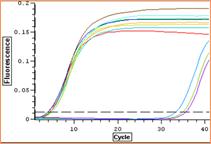
Methods and instrumentation:
- Measurements of ROS and lipidperoxidation, ascorbic acid, glutathione levels and redox potential, determination of total antioxidant capacity, antioxidant enzyme activities by spectrophotometric methods, investigation of isoenzyme pattern after native polyacrylamide gel electrophoresis;
- using the genetic roGFP probe for detecting the changes in the redox homeostasis;
- in silico database mining, construction of phylogenetic trees for gene families;
- DNA, RNA extraction and analysis;
- gene expression analysis by Real-Time quantitative PCR;
- sterile tissue cultures, plant regeneration.
Scientific partners:
Dr. János Györgyey, senior research associate, Institute of Plant Biology, Biological Research Center of Hungarian Academy of Sciences, Szeged
Dr. László Szabados, scientific adviser, Institute of Plant Biology, Biological Research Center of Hungarian Academy of Sciences, Szeged
Dr. János Pauk, research vicedirector, Cereal Research Nonprofit KHT, Szeged,
Dr. Sorina Popescu, Banat’s University of Agricultural Sciences and Veterinary Medicine, Timisoara, Romania
Prof. Dr. Dubravka Stajner, Faculty of Agriculture, University of Novi Sad, Serbia
Prof. Dr. Andreas Meyer, Institute of Crop Science and Resource Conservation (INRES), University of Bonn, Germany
Prof. Dr. Peter Schröder, Helmholtz Zentrum München, Germany
Selected publications:
Bela K, Horváth E, Gallé Á, Szabados L, Tari I, Csiszár J. Plant glutathione peroxidases: emerging role of the antioxidant enzymes in plant development and stress responses. Journal of Plant Physiology 180: 192-201. (2015)
Csiszár J, Horváth E, Váry Zs, Gallé Á, Bela K, Brunner Sz, Tari I. Glutathione transferase supergene family in tomato: salt stress-regulated expression of representative genes from distinct GST classes in plants primed with salicylic acid. Plant Physiology and Biochemistry 78: 15-26. (2014)
Gallé Á, Csiszár J, Benyó D, Laskay G, Leviczky T, Erdei L, Tari I. Isohydric and anisohydric strategies of wheat genotypes under osmotic stress: Biosynthesis and function of ABA in stress responses. Journal of Plant Physiology 170:1389-1399. (2013)
Csiszár J, Gallé Á, Horváth E, Dancsó P, Gombos M, Váry Zs, Erdei L, Györgyey J, Tari I. Different peroxidase activities and expression of abiotic stress-related peroxidases in apical root segments of wheat genotypes with different drought stress tolerance under osmotic stress. Plant Physiology and Biochemistry 52: 119-129. (2012)
Guóth A, Benyó D, Csiszár J, Gallé Á, Horváth F, Cseuz L, Erdei L, Tari I. Relationship between osmotic stress-induced abscisic acid accumulation, biomass production and plant growth in drought tolerant and sensitive wheat genotypes. Acta Physiologiae Plantarum 32: 719-727. (2010)
Gallé Á, Csiszár J, Secenji M, Guóth A, Cseuz L, Tari I, Györgyey J, Erdei L. Glutathione transferase activity and expression patterns during grain filling in flag leaves of wheat genotypes differing in drought tolerance: response to water deficit. Journal of Plant Physiology 166: 1878-1891. (2009)
Székely Gy, Ábrahám E, Cséplő Á, Rigó G, Zsigmond L, Csiszár J, Ayaydin F, Strizhov N, Jasik J, Schmelzer E, Koncz Cs, Szabados L. Duplicated P5CS genes of Arabidopsis play distinct roles in stress regulation and developmental control of proline biosynthesis. Plant Journal 53: 11-28. (2008)
Csiszár J, Lantos E, Tari I, Madosa E, Wodala B, Vashegyi Á, Horváth F, Pécsváradi A, Szabó M, Bartha B, Gallé Á, Lazar A, Coradini G, Staicu M, Postelnicu S, Mihacea S, Nedelea G, Erdei L. Antioxidant enzyme activities in Allium species and their cultivars under water stress. Plant Soil and Environment 53: 517-523. (2007)
Csiszár J, Szabó M, Botau D, Erdei L, Tari I. Auxin autotrophic tobacco calli with modified aldehyde oxidase isoenzyme activities show enhanced abiotic stress tolerance. Acta Biologica Szegediensis 51: 47-52. (2007)
Csiszár J, Szabó M, Erdei L, Márton L, Horváth F, Tari I. Auxin autotrophic tobacco callus tissue resist oxidative stress: the importance of the glutathione S-transferase and peroxidase activities in auxin heterotrophic and autotrophic calli. Journal of Plant Physiology 161: 691–699. (2004)
|
|
